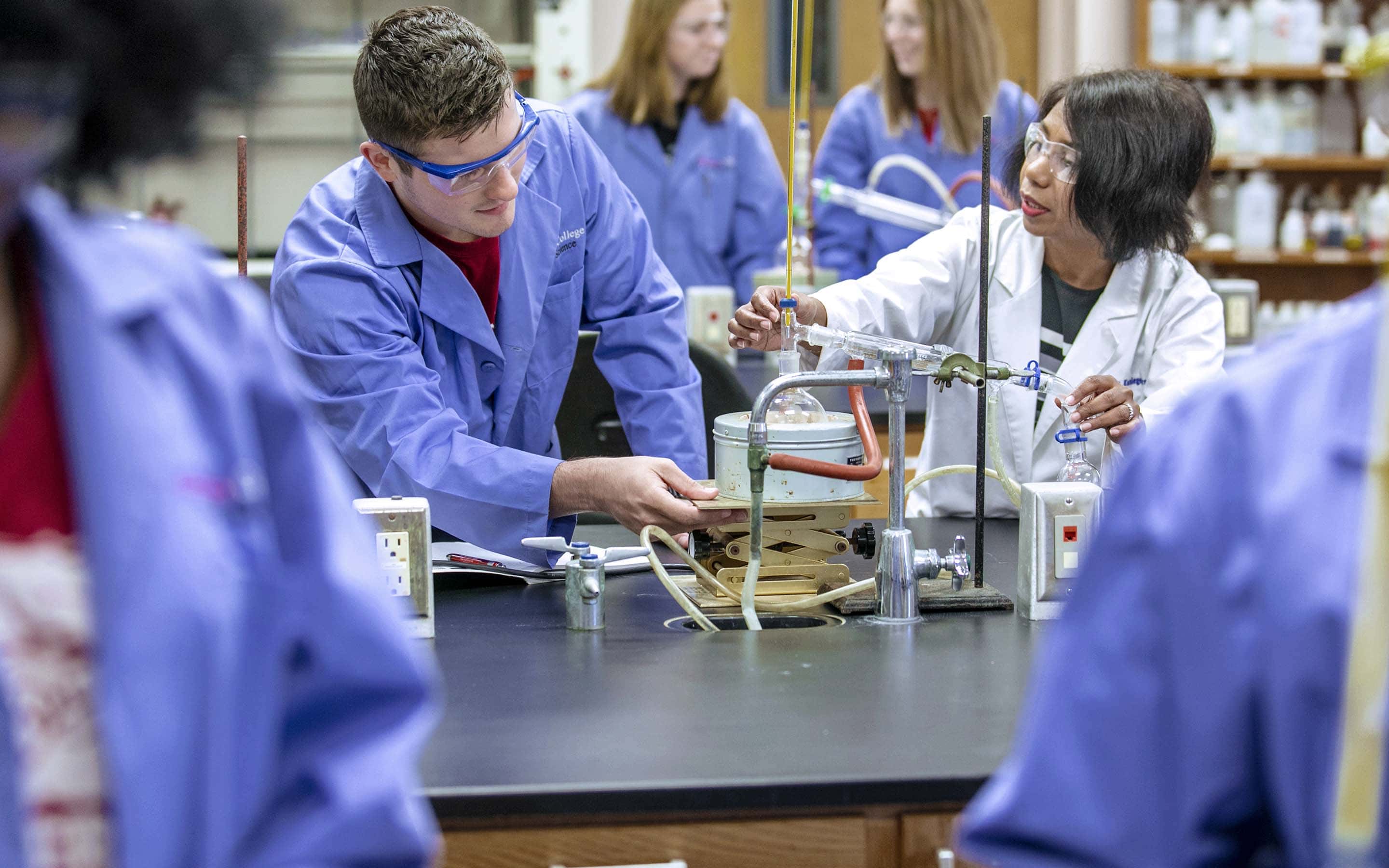
McPherson College became the first college in Kansas to adopt the Green Chemistry Commitment by registering with Beyond Benign, the official partner of the American Chemical Society’s Green Chemistry Institute. The Green Chemistry Commitment is a program for colleges and universities that supports educators and students to approach chemistry from a green perspective to solve problems in the 21st century.
Manjula Koralegedara, professor of chemistry, began introducing green chemistry practices to McPherson College in 2014 after attending a workshop at the University of Oregon organized by the American Chemical Society’s Green Chemistry Institute.
“The concepts clicked with me,” Professor Koralegedara said. “Usually, we only hear about chemicals when they are associated with bad events, but in reality, we can’t live without chemical products. Green chemistry explores how we can achieve the same results while reducing or eliminating the use of hazardous substances. Early integration of green chemistry concepts into college curriculum prepares students for the future and gives our graduates an advantage when looking into careers.”
Green chemistry is the design of chemical products and processes that reduce and or eliminate the use or generation of hazardous substances. This approach requires an open and interdisciplinary view of material and product design, applying the principle that it is better to consider waste and hazard prevention options during the design and development phase rather than disposing, treating, and handling waste and hazardous chemicals after a process or material has been developed.
Implementing green practices has had an overall positive impact on the natural science program, according to Dr. Jonathan Frye, professor of natural science and chair of the department. Waste disposal costs and water usage have been reduced, and students are becoming more conscious of their actions beyond the classroom. The natural science program has also incorporated green chemistry into its curriculum.
“As I teach the principles of green chemistry, I have seen students change their habits,” Koralegedara said. “From something as simple as using a metal water bottle instead of single-use plastic bottles shows they are conscious about what they are doing and the impact it has on our environment.”
Green chemistry involves using 12 principles to thoughtfully design and implement chemical products and processes to minimize hazardous waste and use more benign methodologies. It focuses on the environmental impact along with the economic and societal implications of the practices implemented in labs.
“It’s a relatively new concept but catching on quickly,” Koralegedara said. “The chemical industry is changing and implementing green chemistry more and wants employees with that knowledge.”
According to the U.S. Bureau of Labor Statistics, employment of environmental scientists and specialists is projected to grow five percent by 2031, with 7,800 openings for environmental scientists and specialists on average each year.
While Professor Koralegedara is pleased with the results of green chemistry processes in the natural science program, she would like to support efforts campuswide. She is considering how other programs could implement some of the practices. She is a member of the American Chemical Society and is the chair-elect for the Wichita local section.
Beyond Benign administers and supports the Green Chemistry Commitment and provides annual feedback and support from leading scientists and industry partners in the field to all participating institutions. By signing the Green Chemistry Commitment, McPherson College joins a consortium of 120 other colleges and universities worldwide.
